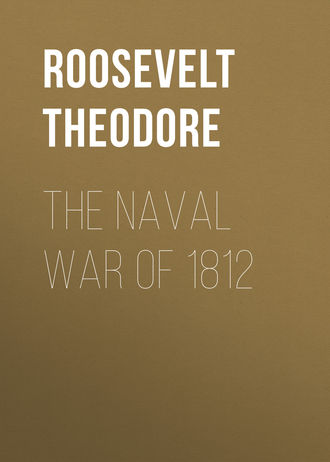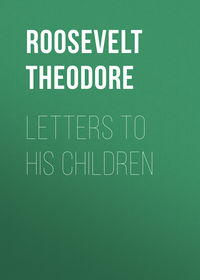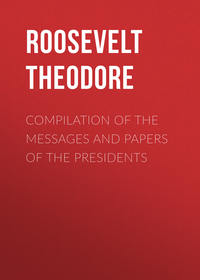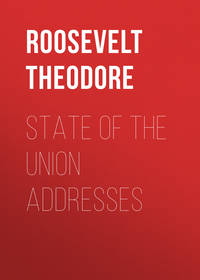 полная версия
полная версияThe Naval War of 1812
Chapter III
1812ON THE OCEANCommodore Rodgers' cruise and unsuccessful chase of the Belvidera—_Cruise of the _Essex—Captain Hull's cruise, and escape from the squadron of Commodore Broke—Constitution captures Guerrière—Wasp captures Frolic—Second unsuccessful cruise of Commodore Rodgers—United States captures Macedonian—Constitution captures Java—Essex starts on a cruise—Summary
At the time of the declaration of war, June 18, 1812, the American navy was but partially prepared for effective service. The Wasp, 18, was still at sea, on her return voyage from France; the Constellation, 38, was lying in the Chesapeake river, unable to receive a crew for several months to come; the Chesapeake, 38, was lying in a similar condition in Boston harbor; the Adams, 28, was at Washington, being cut down and lengthened from a frigate into a corvette. These three cruisers were none of them fit to go to sea till after the end of the year. The Essex, 32, was in New York harbor, but, having some repairs to make, was not yet ready to put out. The Constitution, 44, was at Annapolis, without all of her stores, and engaged in shipping a new crew, the time of the old one being up. The Nautilus, 14, was cruising off New Jersey, and the other small brigs were also off the coast. The only vessels immediately available were those under the command of Commodore Rodgers, at New York, consisting of his own ship, the President, 44, and of the United States, 44, Commodore Decatur, Congress, 38, Captain Smith, Hornet, 18, Captain Lawrence, and Argus, 16, Lieut. Sinclair. It seems marvellous that any nation should have permitted its ships to be so scattered, and many of them in such an unfit condition, at the beginning of hostilities. The British vessels cruising off the coast were not at that time very numerous or formidable, consisting of the Africa, 64, Acasta, 40, Shannon, 38, Guerrière, 38, Belvidera, 36, Aeolus, 32, Southampton, 32, and Minerva, 32, with a number of corvettes and sloops; their force was, however, strong enough to render it impossible for Commodore Rodgers to make any attempt on the coast towns of Canada or the West Indies. But the homeward bound plate fleet had sailed from Jamaica on May 20th, and was only protected by the Thalia, 36, Capt. Vashon, and Reindeer, 18, Capt. Manners. Its capture or destruction would have been a serious blow, and one which there seemed a good chance of striking, as the fleet would have to pass along the American coast, running with the Gulf Stream. Commodore Rodgers had made every preparation, in expectation of war being declared, and an hour after official intelligence of it, together with his instructions, had been received, his squadron put to sea, on June 21st, and ran off toward the south-east [Footnote: Letter of Commodore John Rodgers to the Secretary of the Navy, Sept. 1, 1812.] to get at the Jamaica ships. Having learned from an American brig that she had passed the plate fleet four days before in lat. 36° N., long. 67° W., the Commodore made all sail in that direction. At 6 A.M. on June 23d a sail was made out in the N. E., which proved to be the British frigate Belvidera, 36, Capt. Richard Byron. [Footnote: Brenton, v. 46.] The latter had sighted some of Commodore Rodgers' squadron some time before, and stood toward them, till at 6.30 she made out the three largest ships to be frigates. Having been informed of the likelihood of war by a New York pilot boat, the Belvidera now stood away, going N. E. by E., the wind being fresh from the west. The Americans made all sail in chase, the President, a very fast ship off the wind, leading, and the Congress coming next. At noon the President bore S. W., distant 2 3/4 miles from the Belvidera, Nantucket shoals bearing 100 miles N. and 48 miles E [Footnote: Log of Belvidera, June 23, 1812.]. The wind grew lighter, shifting more toward the south-west, while the ships continued steadily in their course, going N.E. by E. As the President kept gaining, Captain Byron cleared his ship for action, and shifted to the stern ports two long eighteen-pounders on the main-deck and two thirty-two pound carronades on the quarter-deck.
At 4:30 [Footnote: Cooper, ii, 151. According to James, vi, 117, the President was then 600 yards distant from the Belvidera, half a point on her weather or port quarter.] the President's starboard forecastle bowgun was fired by Commodore Rodgers himself; the corresponding main-deck gun was next discharged, and then Commodore Rodgers fired again. These three shots all struck the stern of the Belvidera, killing and wounding nine men,—one of them went through the rudder coat, into the after gun-room, the other two into the captain's cabin. A few more such shots would have rendered the Belvidera's capture certain, but when the President's main-deck gun was discharged for the second time it burst, blowing up the forecastle deck and killing and wounding 16 men, among them the Commodore himself, whose leg was broken. This saved the British frigate. Such an explosion always causes a half panic, every gun being at once suspected. In the midst of the confusion Captain Byron's stern-chasers opened with spirit and effect, killing or wounding six men more. Had the President still pushed steadily on, only using her bow-chasers until she closed abreast, which she could probably have done, the Belvidera could still have been taken; but, instead, the former now bore up and fired her port broadside, cutting her antagonist's rigging slightly, but doing no other damage, while the Belvidera kept up a brisk and galling fire, although the long bolts, breeching-hooks, and breechings of the guns now broke continually, wounding several of the men, including Captain Byron. The President had lost ground by yawing, but she soon regained it, and, coming up closer than before, again opened from her bow-chasers a well-directed fire, which severely wounded her opponent's main-top mast, cross-jack yard, and one or two other spars; [Footnote: James, vi, 119. He says the President was within 400 yards.] but shortly afterward she repeated her former tactics and again lost ground by yawing to discharge another broadside, even more ineffectual than the first. Once more she came up closer than ever, and once more yawed; the single shots from her bow-chasers doing considerable damage, but her raking broadsides none. [Footnote: Lord Howard Douglass, "Naval Gunnery," p. 419 (third edition).] Meanwhile the active crew of the Belvidera repaired every thing as fast as it was damaged, while under the superintendence of Lieutenants Sykes, Bruce, and Campbell, no less than 300 shot were fired from her stern guns. [Footnote: James, vi, 118.] Finding that if the President ceased yawing she could easily run alongside, Captain Byron cut away one bower, one stream, and two sheet anchors, the barge, yawl, gig, and jolly boat, and started 14 tons of water. The effect of this was at once apparent, and she began to gain; meanwhile the damage the sails of the combatants had received had enabled the Congress to close, and when abreast of his consort Captain Smith opened with his bow-chasers, but the shot fell short. The Belvidera soon altered her course to east by south, set her starboard studding-sails, and by midnight was out of danger; and three days afterward reached Halifax harbor.
Lord Howard Douglass' criticisms on this encounter seem very just. He says that the President opened very well with her bow-chasers (in fact the Americans seem to have aimed better and to have done more execution with these guns than the British with their stern-chasers); but that she lost so much ground by yawing and delivering harmless broadsides as to enable her antagonist to escape. Certainly if it had not been for the time thus lost to no purpose, the Commodore would have run alongside his opponent, and the fate of the little 36 would have been sealed. On the other hand it must be remembered that it was only the bursting of the gun on board the President, causing such direful confusion and loss, and especially harmful in disabling her commander, that gave the Belvidera any chance of escape at all. At any rate, whether the American frigate does, or does not, deserve blame, Captain Byron and his crew do most emphatically deserve praise for the skill with which their guns were served and repairs made, the coolness with which measures to escape were adopted, and the courage with which they resisted so superior a force. On this occasion Captain Byron showed himself as good a seaman and as brave a man as he subsequently proved a humane and generous enemy when engaged in the blockade of the Chesapeake. [Footnote: Even Niles, unscrupulously bitter as he is toward the British, does justice to the humanity of Captains Byron and Hardy—which certainly shone in comparison to some of the rather buccaneering exploits of Cockburn's followers in Chesapeake Bay.]
This was not a very auspicious opening of hostilities for America. The loss of the Belvidera was not the only thing to be regretted, for the distance the chase took the pursuers out of their course probably saved the plate fleet. When the Belvidera was first made out, Commodore Rodgers was in latitude 39° 26' N., and longitude 71° 10' W.; at noon the same day the Thalia and her convoy were in latitude 39° N., longitude 62° W. Had they not chased the Belvidera the Americans would probably have run across the plate fleet.
The American squadron reached the western edge of the Newfoundland Banks on June 29th, [Footnote: Letter of Commodore Rodgers, Sept. 1st.] and on July 1st, a little to the east of the Banks, fell in with large quantities of cocoa-nut shells, orange peels, etc., which filled every one with great hopes of overtaking the quarry. On July 9th, the Hornet captured a British privateer, in latitude 45° 30' N., and longitude 23° W., and her master reported that he had seen the Jamaica-men the previous evening; but nothing further was heard or seen of them, and on July 13th, being within twenty hours' sail of the English Channel, Commodore Rodgers reluctantly turned southward, reaching Madeira July 21st. Thence he cruised toward the Azores and by the Grand Banks home, there being considerable sickness on the ships. On August 31st he reached Boston after a very unfortunate cruise, in which he had made but seven prizes, all merchant-men, and had recaptured one American vessel.
On July 3d the Essex, 32, Captain David Porter, put out of New York. As has been already explained she was most inefficiently armed, almost entirely with carronades. This placed her at the mercy of any frigate with long guns which could keep at a distance of a few hundred yards; but in spite of Captain Porter's petitions and remonstrances he was not allowed to change his armament. On the 11th of July at 2 A. M., latitude 33° N., longitude 66° W., the Essex fell in with the Minerva, 32, Captain Richard Hawkins, convoying seven transports, each containing about 200 troops, bound from Barbadoes to Quebec. The convoy was sailing in open order, and, there being a dull moon, the Essex ran in and cut out transport No. 299, with 197 soldiers aboard. Having taken out the soldiers, Captain Porter stood back to the convoy, expecting Captain Hawkins to come out and fight him; but this the latter would not do, keeping the convoy in close order around him. The transports were all armed and still contained in the aggregate 1,200 soldiers. As the Essex could only fight at close quarters these heavy odds rendered it hopeless for her to try to cut out the Minerva. Her carronades would have to be used at short range to be effective, and it would of course have been folly to run in right among the convoy, and expose herself to the certainty of being boarded by five times as many men as she possessed. The Minerva had three less guns a side, and on her spar-deck carried 24-pound carronades instead of 32's, and, moreover, had fifty men less than the Essex, which had about 270 men this cruise; on the other hand, her main-deck was armed with long 12's, so that it is hard to say whether she did right or not in refusing to fight. She was of the same force as the Southampton whose captain, Sir James Lucas Yeo, subsequently challenged Porter, but never appointed a meeting-place. In the event of a meeting, the advantage, in ships of such radically different armaments, would have been with that captain who succeeded in outmanoeuvring the other and in making the fight come off at the distance best suited to himself. At long range either the Minerva or Southampton would possess an immense superiority; but if Porter could have contrived to run up within a couple of hundred yards, or still better, to board, his superiority in weight of metal and number of men would have enabled him to carry either of them. Porter's crew was better trained for boarding than almost any other American commander's; and probably none of the British frigates on the American station, except the Shannon and Tenedos, would have stood a chance with the Essex in a hand-to-hand struggle. Among her youngest midshipmen was one, by name David Glasgow Farragut, then but thirteen years old, who afterward became the first and greatest admiral of the United States. His own words on this point will be read with interest. "Every day," he says, [Footnote: "Life of Farragut" (embodying his journal and letters), p. 31. By his son, Loyall Farragut, New York. 1879.] "the crew were exercised at the great guns, small arms, and single stick. And I may here mention the fact that I have never been on a ship where the crew of the old Essex was represented but that I found them to be the best swordsmen on board. They had been so thoroughly trained as boarders that every man was prepared for such an emergency, with his cutlass as sharp as a razor, a dirk made by the ship's armorer out of a file, and a pistol." [Footnote: James says: "Had Captain Porter really endeavored to bring the Minerva to action we do not see what could have prevented the Essex with her superiority of sailing, from coming alongside of her. But no such thought, we are sure, entered into Captain Porter's head." What "prevented the Essex" was the Minerva's not venturing out of the convoy. Farragut, in his journal writes: "The captured British officers were very anxious for us to have a fight with the Minerva, as they considered her a good match for the Essex, and Captain Porter replied that he should gratify them with pleasure if his majesty's commander was of their taste. So we stood toward the convoy and when within gunshot hove to, and awaited the Minerva, but she tacked and stood in among the convoy, to the utter amazement of our prisoners, who denounced the commander as a base coward, and expressed their determination to report him to the Admiralty." An incident of reported "flinching" like this is not worth mentioning; I allude to it only to show the value of James' sneers.]
On August 13th a sail was made out to windward, which proved to be the British ship-sloop Alert, 16, Captain T. L. O. Laugharne, carrying 20 eighteen-pound carronades and 100 men. [Footnote: James (History, vi, p. 128) says "86 men." In the Naval Archives at Washington in the "Captains' Letters" for 1812 (vol. n. No. 182) can be found enclosed in Porter's letter the parole of the officers and crew of the Alert signed by Captain Laugharne; it contains either 100 or 101 names of the crew of the Alert besides those of a number of other prisoners sent back in the same cartel.] As soon as the Essex discovered the Alert she put out drags astern, and led the enemy to believe she was trying to escape by sending a few men aloft to shake out the reefs and make sail. Concluding the frigate to be a merchant-man, the Alert bore down on her; while the Americans went to quarters and cleared for action, although the tompions were left in the guns, and the ports kept closed. [Footnote: "Life of Farragut," p. 16.] The Alert fired a gun and the Essex hove to, when the former passed under her stern, and when on her lee quarter poured in a broadside of grape and canister; but the sloop was so far abaft the frigate's beam that her shot did not enter the ports and caused no damage. Thereupon Porter put up his helm and opened as soon as his guns would bear, tompions and all. The Alert now discovered her error and made off, but too late, for in eight minutes the Essex was along side, and the Alert fired a musket and struck, three men being wounded and several feet of water in the hold. She was disarmed and sent as a cartel into St. Johns. It has been the fashion among American writers to speak of her as if she were "unworthily" given up, but such an accusation is entirely groundless. The Essex was four times her force, and all that could possibly be expected of her was to do as she did—exchange broadsides and strike, having suffered some loss and damage. The Essex returned to New York on September 7th, having made 10 prizes, containing 423 men. [Footnote: Before entering New York the Essex fell in with a British force which, in both Porter's and Farragut's works, is said to have been composed of the Acasta and Shannon, each of fifty guns, and Ringdove, of twenty. James says it was the Shannon, accompanied by a merchant vessel. It is not a point of much importance, as nothing came of the meeting, and the Shannon, alone, with her immensely superior armament, ought to have been a match twice over for the Essex: although, if James is right, as seems probable, it gives rather a comical turn to Porter's account of his "extraordinary escape."]
The Belvidera, as has been stated, carried the news of the war to Halifax. On July 5th Vice-Admiral Sawyer despatched a squadron to cruise against the United States, commanded by Philip Vere Broke, of the Shannon, 38, having under him the Belvidera, 36, Captain Richard Byron, Africa, 64, Captain John Bastard, and Aeolus. 32, Captain Lord James Townsend. On the 9th, while off Nantucket, they were joined by the Guerrière, 38, Captain James Richard Dacres. On the 16th the squadron fell in with and captured the United States brig Nautilus, 14, Lieutenant Crane, which, like all the little brigs, was overloaded with guns and men. She threw her lee guns overboard and made use of every expedient to escape, but to no purpose. At 3 P.M. of the following day, when the British ships were abreast of Barnegat, about four leagues off shore, a strange sail was seen and immediately chased, in the south by east, or windward quarter, standing to the northeast. This was the United States frigate Constitution, 44, Captain Isaac Hull. [Footnote: For the ensuing chase I have relied mainly on Cooper; see also "Memoir of Admiral Broke," p. 240; James, vi, 133: and Marshall's "Naval Biography" (London, 1825), ii. 625.] When the war broke out he was in the Chesapeake River getting a new crew aboard. Having shipped over 450 men (counting officers), he put out of harbor on the 12th of July. His crew was entirely new, drafts of men coming on board up to the last moment. [Footnote: In a letter to the Secretary of the Navy ("Captains' Letters." 1812. ii, No. 85), Hull, after speaking of the way his men were arriving, says: "The crew are as yet unacquainted with a ship of war, as many have but lately joined and have never been on an armed ship before. * * * We are doing all that we can to make them acquainted with their duty, and in a few days we shall have nothing to fear from any single-decked ship."] On the 17th, at 2 P.M., Hull discovered four sail, in the northern board, heading to the westward. At 3, the wind being very light, the Constitution made sail and tacked, in 18-1/2 fathoms. At 4, in the N. E., a fifth sail appeared, which afterward proved to be the Guerrière, The first four ships bore N. N. W., and were all on the starboard tack; while by 6 o'clock the fifth bore E. N. E. At 6.15 the wind shifted and blew lightly from the south, bringing the American ship to wind-ward. She then wore round with her head to the eastward, set her light studding-sails and stay-sails, and at 7.30 beat to action, intending to speak the nearest vessel, the Guerrière. The two frigates neared one another gradually and at 10 the Constitution began making signals, which she continued for over an hour. At 3.30 A. M. on the 18th the Guerrière, going gradually toward the Constitution on the port tack, and but one half mile distant, discovered on her lee beam the Belvidera and the other British vessels, and signalled to them. They did not answer the signals, thinking she must know who they were—a circumstance which afterward gave rise to sharp recriminations among the captains—and Dacres, concluding them to be Commodore Rodgers' squadron, tacked, and then wore round and stood away from the Constitution for some time before discovering his mistake.
[Illustration: Captain Isaac Hull: a miniature by an unknown artist, circa 1807-1812. (Courtesy The New-York Historical Society)]
At 5 A. M. Hull had just enough steerage way on to keep his head to the east, on the starboard tack; on his lee quarter, bearing N. E. by N., were the Belvidera and Guerrière and astern the Shannon, Aeolus, and Africa. At 5.30 it fell entirely calm, and Hull put out his boats to tow the ship, always going southward. At the same time he whipped up a 24 from the main-deck, and got the forecastlechaser aft, cutting away the taffrail to give the two guns more freedom to work in and also running out, through the cabin windows, two of the long main-deck 24's. The British boats were towing also. At 6 A. M. a light breeze sprang up, and the Constitution set studding-sails and stay-sails; the Shannon opened at her with her bow guns, but ceased when she found she could not reach her. At 6.30, the wind having died away, the Shannon began to gain, almost all the boats of the squadron towing her. Having sounded in 26 fathoms, Lieutenant Charles Morris suggested to Hull to try kedging. All the spare rope was bent on to the cables, payed out into the cutters, and a kedge run out half a mile ahead and let go; then the crew clapped on and walked away with the ship, overrunning and tripping the kedge as she came up with the end of the line. Meanwhile, fresh lines and another kedge were carried ahead, and the frigate glided away from her pursuers. At 7.30 A. M. a little breeze sprang up, when the Constitution set her ensign and fired a shot at the Shannon. It soon fell calm again and the Shannon neared. At 9.10 a light air from the southward struck the ship, bringing her to windward. As the breeze was seen coming, her sails were trimmed, and as soon as she obeyed her helm she was brought close up on the port tack. The boats dropped in alongside; those that belonged to the davits were run up, while the others were just lifted clear of water, by purchases on the spare spars, stowed outboard, where they could be used again at a minute's notice. Meanwhile, on her lee beam, the Guerrière opened fire; but her shot fell short, and the Americans paid not the slightest heed to it. Soon it again fell calm, when Hull had 2000 gallons of water started, and again put out his boats to tow. The Shannon with some of the other boats of the squadron helping her, gained on the Constitution but by severe exertion was again left behind. Shortly afterward, a slight wind springing up, the Belvidera gained on the other British ships, and when it fell calm she was nearer to the Constitution than any of her consorts, their boats being put on to her. [Footnote: Cooper speaks as if this was the Shannon; but from Marshall's "Naval Biography" we learn that it was the Belvidera. At other times he confuses the Belvidera with the Guerrière. Captain Hull, of course, could not accurately distinguish the names of his pursuers. My account is drawn from a careful comparison of Marshall, Cooper, and James. ] At 10.30, observing the benefit that the Constitution had derived from warping, Captain Byron did the same, bending all his hawsers to one another, and working two kedge anchors at the same time by paying the warp out through one hawse-hole as it was run in through the other opposite. Having men from the other frigates aboard, and a lighter ship to work, Captain Byron at 2 P. M. was near enough to exchange bow—and stern-chasers with the Constitution, out of range however. Hull expected to be overtaken, and made every arrangement to try in such case to disable the first frigate before her consorts could close. But neither the Belvidera nor the Shannon dared to tow very near for fear of having their boats sunk by the American's stern-chasers.









